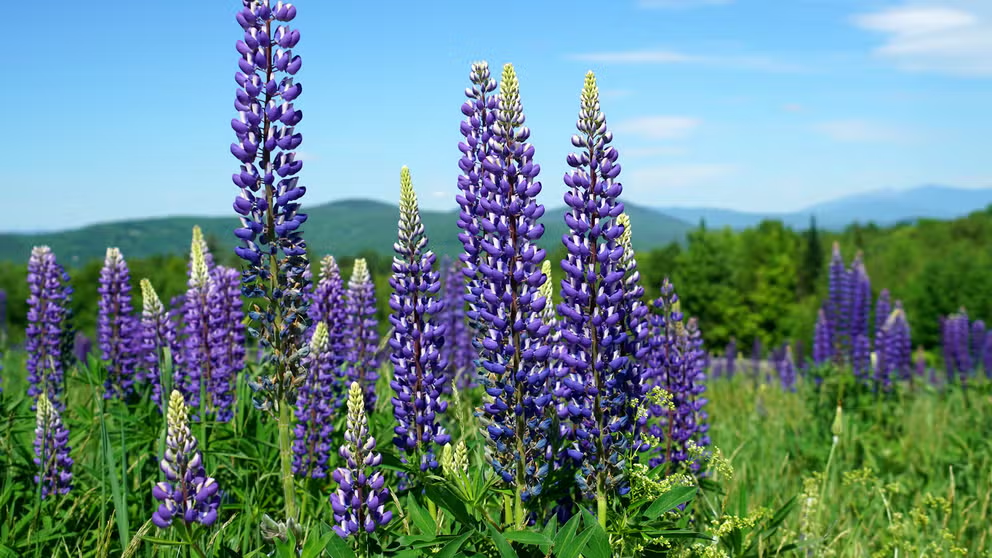‘It’s really spectacular’: Texans celebrate spring with the return of the bluebonnets
The bluebonnet has inspired artists and scientists alike -- but even more so, it’s been a source of state pride
7 most beautiful places to see flowers bloom in the U.S.
With the arrival of spring, fields across the United States come alive with color in stunning floral displays.
Every spring, the Lone Star State undergoes a transformation.
Once-green pastures transform into soft blue seas, as legions of bluebonnets rise from their winter slumber to meet the warm, spring sunshine.
"It's just a breathtaking view," said Larry Stein, associate department head, professor and extension horticulturalist at Texas A&M AgriLife Extension Service.
This view has served as inspiration for artists and scientists alike. But even more so, it’s been a source of pride with the wildflowers and their clusters of blue petals serving as a beloved symbol of Texas.
God blessed texensis

Bluebonnets paint a Texas field in blue.
(Laura McKenzie / Texas A&M AgriLife Marketing and Communications)
Bluebonnets begin to peek through the brush around March, but they usually experience peak bloom in April.
"That's when you'll see the fields of bluebonnets, and it's really spectacular to see," said Amy Galloway, lead horticulturalist at the Family Garden at the Lady Bird Johnson Wildflower Center.
The bluebonnet that most people know in Texas is part of the aptly named subspecies Lupinus texensis
According to Galloway, texensis is no stranger to its namesake state.
"It is native, meaning that it is has been in this area for a very long time, and it is fully adapted to our weather conditions, our soil, all of that," Galloway said.
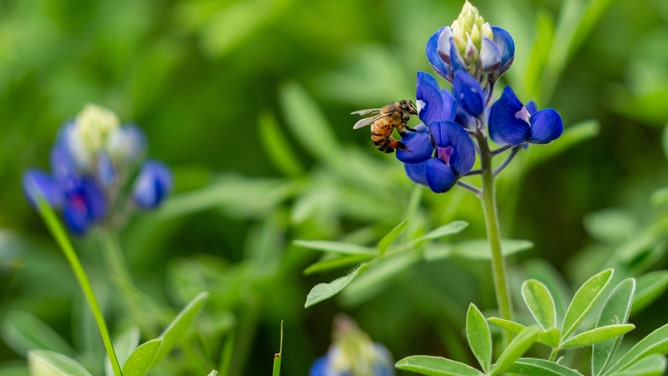
A bee rests on a bluebonnet. Bluebonnets supply bees and other pollinators with nectar.
(Laura McKenzie / Texas A&M AgriLife Marketing and Communications)
One particular adaptation allows the plant to give back to the land.
"They have a relationship with a bacteria that is in the soil, and they actually fix nitrogen," Galloway said.
Nitrogen is an essential element that is most needed by all plants, according to Galloway. By "fixing" nitrogen, bluebonnets produce the element and enrich the soil, helping plants that grow within the soil — and the animals that rely on them — to thrive.
Because of this, Stein says bluebonnets don’t need fertilizer to help them grow — a self-reliance that seems fitting for a plant representing the Lone Star State.
A botanical divide
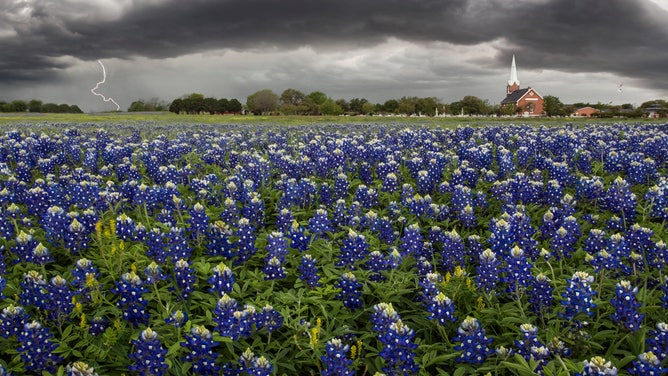
A storm brews above a sea of bluebonnets.
(Jason Weingart / Future Publishing / Getty Images)
The bluebonnet’s journey from resident to representative of Texas involved matters of debate and diplomacy.
According to Stein, when Texas named the bluebonnet subspecies Lupinus subcarnosis the official state flower in 1900, they unintentionally caused an uproar.
"People were really frustrated because the really pretty blue bonnet is [Lupinus] texensis," Stein said.
For years, some Texans rallied against Lupinus subcarnosis and asked the state legislature to instead choose the "right" bluebonnet, Lupinus texensis.

Vintage postcard ‘Greetings from Texas,’ showing the state capitol in Austin, the state flower the Blue Bonnet, cowboys, the Alamo, longhorn cattle and an oil derrick.
(Found Image Holdings / Corbis / Getty Images)
Then in 1971, the state legislature flipped their decision — sort of.
"What they did is they named texensis the state flower, and they also put in the deal that if there's any other bluebonnets species identified, they're also the state flower," Stein said.
"So there's five subspecies of the bluebonnets, and all of those are considered the state flower of Texas."
The competition
But of all flowers, why did Texans choose the bluebonnet, along with its cadre of subspecies, to be their state flower?
According to Stein, some Texans initially proposed the cotton boll to be the state flower, since Texas was a large grower of cotton at the time. Meanwhile, others suggested the cactus flower, since cacti grow so well in Texas.
But in the end, the answer was clear.
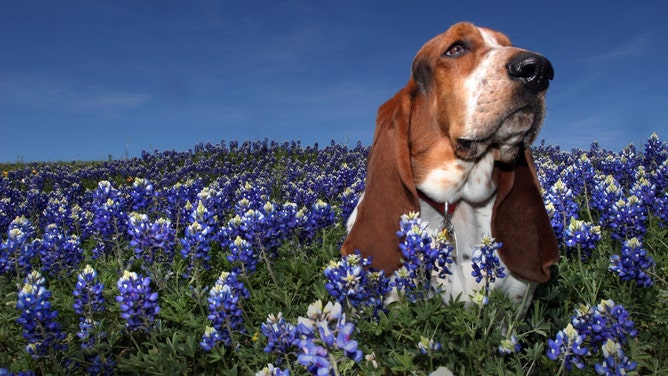
A field of bluebonnets surround a basset hound in Texas.
(David Woo / Corbis / Getty Images)
"Bluebonnet, it's so prevalent and blooms so profusely in the spring that it's the natural choice," Stein said.
"If you've ever seen it bloom where it's just dramatic — it's just a mass of blue. So, I don't think it's any question why, it was just the beauty of that flower when it blooms in the spring.
Red, white and bluebonnets
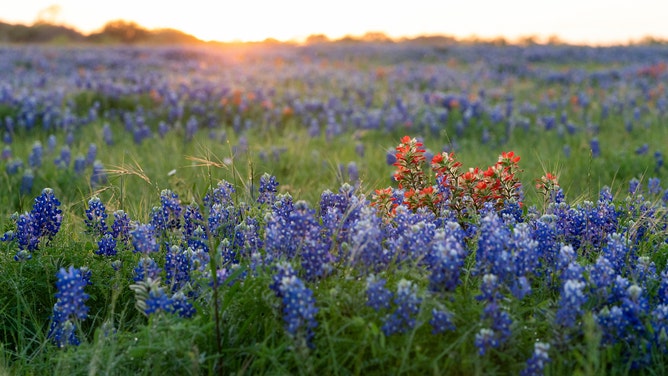
A field of bluebonnets, with a lone bush of red bluebonnets.
(Laura McKenzie / Texas A&M AgriLife Marketing and Communications)
In the years since the bluebonnet became the official flower of Texas, love for the flower in Texans’ hearts has only grown.
In fact, in 2003, Texas A&M Jerry Parsons revealed a garden in the shape of the Texas flag made completely out of bluebonnets — a project that took over 30 years, as Parsons developed red bluebonnets out of a rare pink subspecies, according to Stein.
Today, the classic blue bluebonnets can be seen throughout the Lone Star State, as fields of their blooms cheerily greet passersby.
"In a good year, it's just a sea of color," Stein said. "It's just color everywhere."
